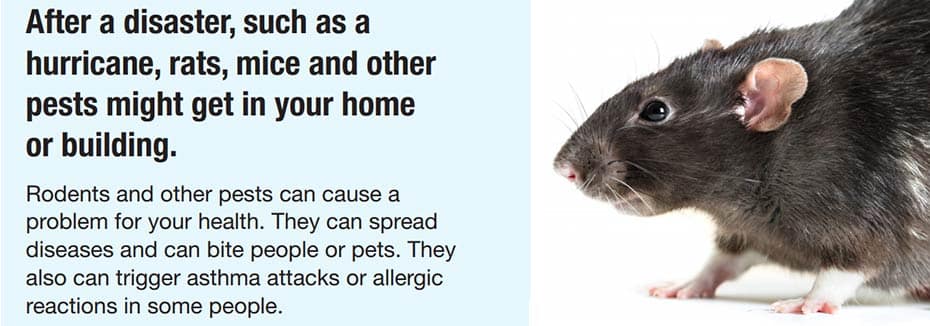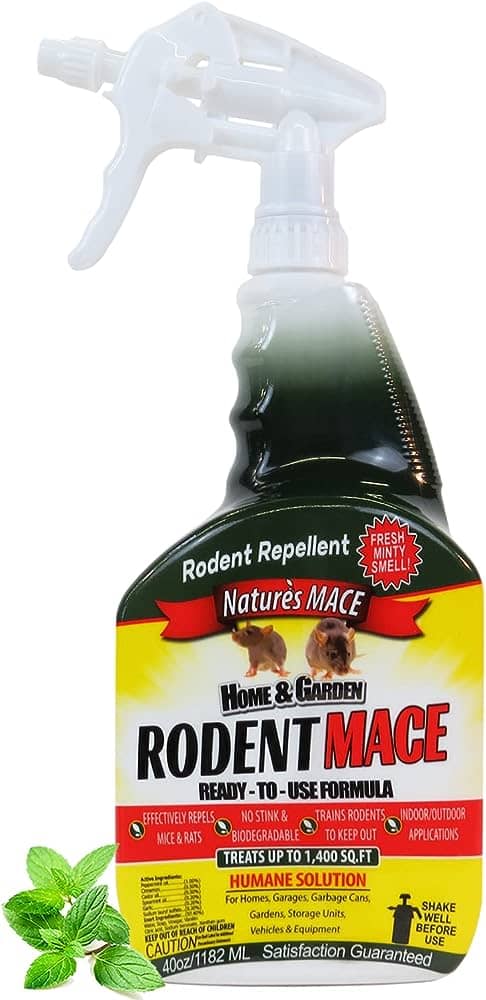Pest-proofing your home against mice and other pests requires taking proactive measures to prevent their entry and eliminate existing infestations. Mice and other pests can find their way into your home through small gaps and cracks.
To combat them, seal any openings, including crevices, vents, and gaps around doors and windows. Keep your home clean and clutter-free, as pests are attracted to food and hiding places. Store food in airtight containers and clean up spills promptly.
Remove any potential sources of water, such as leaky pipes and pet water dishes. Implement traps and bait stations to catch and eliminate pests. Regularly inspect your home and address any signs of infestation promptly. By following these steps, you can effectively pest-proof your home and keep unwanted visitors at bay.
Examining Vulnerable Areas Around Your Home
Protect your home from pests by examining vulnerable areas. Combat mice and other pests by pest-proofing your home effectively.
When it comes to pest-proofing your home, it’s crucial to identify and address vulnerable areas that pests can exploit. By paying attention to these vulnerable spots, you can effectively combat pests like mice and prevent them from entering your home.
Let’s take a closer look at some key areas you should examine:
Cracks And Gaps In Walls And Foundation
Inspecting your walls and foundation for cracks and gaps is an essential step in pest-proofing your home. These openings provide prime entry points for pests like mice. Here are some points to consider:
- Look for cracks and gaps in the exterior walls, paying attention to areas where pipes or utility lines enter the house.
- Seal any openings you find with caulk or expanding foam, ensuring a tight seal to prevent pests from getting in.
- Check the walls and foundation for gaps around windows, vents, and electrical outlets. These should also be properly sealed to keep pests out.
- Consider reinforcing vulnerable areas with steel wool, as mice can’t chew through this material.
Openings Around Doors And Windows
Doors and windows can be another weak link in your home’s defense against pests. Take a closer look at these openings to protect against unwelcome visitors:
- Inspect door frames for gaps and ensure they are properly sealed. Install door sweeps if needed to close any space at the bottom of doors.
- Examine windows for any broken seals or gaps. Replace damaged weatherstripping and consider using window screens to provide an extra layer of protection.
- Assess the condition of your window screens and repair any holes or tears. This will prevent mice and other pests from gaining access to your home.
Vents And Chimneys
Vents and chimneys are common entry points for pests looking for shelter. Make sure to address these areas to maintain a pest-free environment:
- Inspect exterior vents and ensure they have appropriate covers or screens to prevent pest entry.
- Regularly clean and maintain vents to ensure they are free of debris, which can attract pests.
- Check the chimney for any damaged or missing caps. Repair or replace them as necessary to prevent pests from entering through the chimney.
Taking the time to thoroughly examine these vulnerable areas around your home will go a long way in keeping pests like mice at bay. By implementing these preventive measures, you can safeguard your home and enjoy a pest-free environment.
Essential Steps To Seal Entry Points
Seal entry points effectively to keep mice and other pests out of your home. These essential steps will help you pest-proof your house and protect it from unwanted intruders.
Pest-Proofing: Combating Mice And Other Pests In Your Home
Dealing with pest infestations can be a frustrating and unpleasant experience. Mice, in particular, can cause significant damage to your home and pose serious health risks. To prevent these unwanted guests from invading your living space, it’s crucial to seal potential entry points effectively.
In this section, we will cover three essential steps to pest-proof your home, including caulking cracks and gaps, installing door sweeps and weatherstripping, and adding screens to vents and chimneys.
Using Caulk To Seal Cracks And Gaps:
- Inspect your home for any visible cracks or gaps in its foundation, walls, windows, and doors.
- Use a high-quality caulk to seal these openings, ensuring a tight seal.
- Apply caulk to both the interior and exterior sides of cracks and gaps to prevent mice from finding their way inside.
- Pay special attention to areas where pipes or cables enter your home as mice can exploit even the tiniest openings.
Installing Door Sweeps And Weatherstripping:
- Check the bottom of your exterior doors for any gaps or spaces.
- Install door sweeps, which are long strips of rubber or brush-like material, to create a barrier against pests.
- For gaps around windows or doors, use weatherstripping to seal off entry points effectively.
- Ensure that your door sweeps and weatherstripping are in good condition and replace them if damaged or worn out.
Adding Screens To Vents And Chimneys:
- Vents and chimneys provide easy access for rodents and other pests to enter your home.
- Install fine mesh screens over vents and chimney openings to prevent pests from gaining entry.
- Regularly inspect the screens for any damage or openings and repair or replace them as needed.
- Keep in mind that screens should be sturdy and tightly secured to withstand attempts from pests to dislodge them.
By following these essential steps to seal entry points, you can significantly reduce the chances of mice and other pests invading your home. Remember, prevention is key when it comes to keeping your living space pest-free.
Maintaining Cleanliness And Organization
Maintaining a clean and organized home is essential for pest-proofing and combating mice and other pests. By keeping your living space tidy, you can reduce the risk of infestations and create a hostile environment for unwanted critters. Regular cleaning, proper food storage, and sealing entry points are effective measures to keep pests at bay.
Keeping your home clean and well-organized is crucial in preventing pest infestations. By following a few simple guidelines, you can create an environment that is less attractive to pests like mice. Here’s how:
Proper Food Storage:
- Store food in airtight containers: This will help prevent mice from smelling and accessing your food.
- Seal any cracks or gaps in your pantry: Mice can squeeze through small openings, so make sure your pantry is properly sealed.
- Clean up spills immediately: Even the smallest crumbs can attract mice, so be sure to clean up any spills or crumbs right away.
- Keep trash containers tightly closed: Mice are attracted to trash, so make sure your trash containers have tight-fitting lids to keep them out.
Regular Cleaning And Decluttering:
- Clean regularly: Regular cleaning not only keeps your home looking tidy, but it also removes any potential food sources for pests.
- Vacuum regularly: Vacuuming helps to remove crumbs, food particles, and any debris that mice may be attracted to.
- Declutter your space: Mice love cluttered areas as they provide plenty of hiding spots. Keep your living space organized and remove any unnecessary clutter.
- Store items properly: Avoid leaving items on the floor as it can provide hiding spots for pests. Instead, store items in plastic containers or on elevated shelves.
By maintaining cleanliness and organization in your home, you can greatly reduce the risk of a pest infestation. These simple steps will help create an environment that is less attractive to mice and other pests, ensuring your home remains pest-free.
Implementing Natural Pest Deterrents
Discover effective ways to keep pests like mice out of your home by implementing natural pest deterrents. With these eco-friendly solutions, you can protect your home without relying on harmful chemicals or pesticides.
Essential Oils And Herbs
- Using essential oils and herbs is a natural and effective way to deter pests from entering your home. Here are some options to consider:
- Peppermint oil: Mice and other pests dislike the strong scent of peppermint. Soak cotton balls in peppermint oil and place them in areas where pests are likely to enter, such as near windows and doors.
- Eucalyptus oil: Similar to peppermint oil, eucalyptus oil has a strong scent that pests find repulsive. Dab a few drops of eucalyptus oil on a cloth or cotton balls and place them strategically around your home.
- Lavender: Besides its pleasant smell, lavender acts as a natural pest repellent. Place lavender sachets or dried lavender in closets, drawers, and other areas to keep pests away.
- Bay leaves: These herbs are known for their strong aroma and can be an effective deterrent for pests. Place bay leaves in pantry shelves, near pet food, or anywhere that pests are likely to be present.
- Rosemary: Rosemary has a strong scent that pests find offensive. You can create a natural pest spray by boiling rosemary leaves in water, then straining the liquid into a spray bottle. Use this spray in cracks, crevices, and entry points.
- Citrus peels: Most pests detest the smell of citrus fruits. Scatter orange, lemon, or lime peels near entrances or blend them with water to create a homemade citrus spray.
Decorating your home with these essential oils and herbs can help in deterring pests naturally.
Choosing The Right Pest Control Methods
Discover effective techniques for pest-proofing your home and combating pests like mice. Learn the right pest control methods to keep your home safe and critter-free.
Pest-Proofing: Combating Mice And Other Pests In Your Home
Pests can quickly turn our homes into a nightmare, causing damage and spreading diseases. Taking swift action to combat these unwelcome guests is essential for a peaceful and hygienic living space. Choosing the right pest control methods can make all the difference in effectively getting rid of pests without causing harm or inconveniences.
Let’s explore two effective approaches to pest control: traps and baits, as well as chemical-free alternatives.
Traps And Baits
- Traps:
- Snap traps: Designed to catch mice and rodents swiftly. These traps have a platform armed with a spring-loaded lever and a bait trigger. When triggered, the lever snaps shut, capturing the pest. Always place traps along walls and in areas where pests are known to travel.
- Glue traps: Sticky adhesive pads that immobilize pests upon contact. These traps are helpful for capturing small insects or rodents. Remember to check the traps regularly and dispose of captured pests safely.
- Baits:
- Rodenticides: These baits contain chemicals that mice and rats find enticing. Once ingested, the rodents experience lethal effects. Place the baits in secure bait stations to prevent accidental ingestion by non-target animals.
- Anticoagulant baits: Using substances that interfere with blood clotting, these baits can effectively eliminate mice. When the pests consume the bait, they will eventually bleed to death. Take care to use these baits responsibly, following instructions to minimize risks.
Chemical-Free Alternatives
- Natural repellents:
- Peppermint oil: The strong scent of peppermint acts as a deterrent to rodents. Simply soak cotton balls in peppermint oil and place them in areas prone to infestations.
- Essential oils: Some essential oils like eucalyptus or citronella possess insect-repelling properties. Dilute a few drops of oil in water and spray the solution in areas where pests are likely to visit.
- Ultrasonic devices: Emitting high-frequency sounds that pests find irritating, ultrasonic devices are an eco-friendly way to deter mice and insects.
- Physical barriers:
- Seal cracks and openings: Use caulk or weatherstripping to seal any crevices or entry points pests might use to gain access to your home.
- Mesh screens: Install wire mesh screens on windows, vents, and chimneys to prevent pests from entering while still allowing for adequate ventilation.
By choosing the right pest control methods, you can effectively eliminate pests from your home without compromising the safety of your family or the environment. From traps and baits to chemical-free alternatives, finding the approach that aligns with your needs will help you regain control of your living space.
Stay vigilant, employ preventive measures, and ensure your home remains a pest-free haven.
Seeking Professional Pest Control Assistance
Discover how professional pest control assistance can help you combat mice and other pests in your home. Keep your living space pest-free with expert solutions tailored to your needs.
Signs That Professional Help Is Needed:
- Droppings: Discovering small black droppings around your home is a telltale sign of a mice infestation. These droppings are typically found near food sources or in hidden areas like cabinets or behind appliances.
- Chewed wires or furniture: Mice have a habit of gnawing on wires, furniture, and even walls, causing damage to your home. If you notice chew marks or shredded materials, it’s a strong indication of a pest problem.
- Nests: Mice build nests using shredded paper, fabric, or insulation. Finding these nests in hidden areas, such as attics or basements, suggests an active infestation.
- Strange smells: Mice leave behind a distinct, musky odor in their urine and droppings. If you notice an unexplained smell in your home, it’s time to consider professional pest control.
- Sightings: Spotting live mice in your home is an obvious sign that you need professional assistance. If you see one mouse, there’s likely a larger population hiding somewhere.
Choosing A Reputable Pest Control Company:
- Research and reviews: Conduct thorough research online to find reputable pest control companies in your area. Read customer reviews and testimonials to gauge their service quality and reliability.
- Certification and licensing: Ensure that the company you choose is certified and licensed to perform pest control treatments. This guarantees that they meet industry standards and have the necessary expertise.
- Inspection and assessment: A reliable pest control company will start with a comprehensive inspection to identify the extent of the infestation. They should provide a detailed assessment and customized treatment plan.
- Treatment options: Look for a company that offers a range of treatment options. Different pest control methods may be needed depending on the severity of the infestation, and it’s important to choose a company that can address your specific needs.
- Guarantees and warranties: Reputable pest control companies stand behind their work. Look for companies that offer guarantees or warranties on their services, so you have peace of mind knowing they will take responsibility for any recurring pest issues.
Remember, while DIY methods can sometimes be effective in minor situations, seeking professional assistance is crucial if you want to combat mice and other pests effectively. Professional pest control companies have the expertise, resources, and knowledge to eliminate infestations and prevent future problems.
Don’t hesitate to reach out to the experts when needed.

Credit: www.amazon.com
Frequently Asked Questions Of Pest-Proofing: Combating Mice And Other Pests In Your Home
Is Rodent Proofing Worth It?
Yes, rodent proofing is worth it for preventing damage and diseases caused by rodents.
What Can You Do To Prevent Mice From Getting In Your House?
To prevent mice from entering your house, seal all cracks and holes, store food in airtight containers, keep your living areas clean, and remove any potential nesting sites.
What Keeps Mice Away Permanently?
To keep mice away permanently, seal all entry points, maintain cleanliness, store food properly, and use mouse repellents.
Does Mouse Proofing Work?
Yes, mouse proofing works. It effectively prevents mice from entering your space, keeping them out for good.
Conclusion
To keep your home free from mice and other pests, it’s essential to implement pest-proofing measures. By closely inspecting your property for potential entry points, sealing gaps, and keeping your space clean and clutter-free, you can effectively deter these unwanted visitors.
Additionally, using natural deterrents like peppermint oil or vinegar can be a safe and eco-friendly alternative to harsh chemicals. Regularly maintaining your home and addressing any moisture issues or leaks will also help prevent pests from taking up residence. Remember, prevention is key when it comes to keeping your home pest-free.
By following these simple steps and staying vigilant, you can create a comfortable and pest-free environment for you and your family. So take action today and say goodbye to unwanted house guests.




